We all love the mountains, that’s why we go. Giant, timeless monsters that remind us of the true pace of life. They have been here long before us and will still be there long after we've gone.
What better way to spend your weekends or holidays is there than hiking in the mountains? Using the power of your legs to climb to the summit, taking in the bird’s-eye view as you look down on all around.
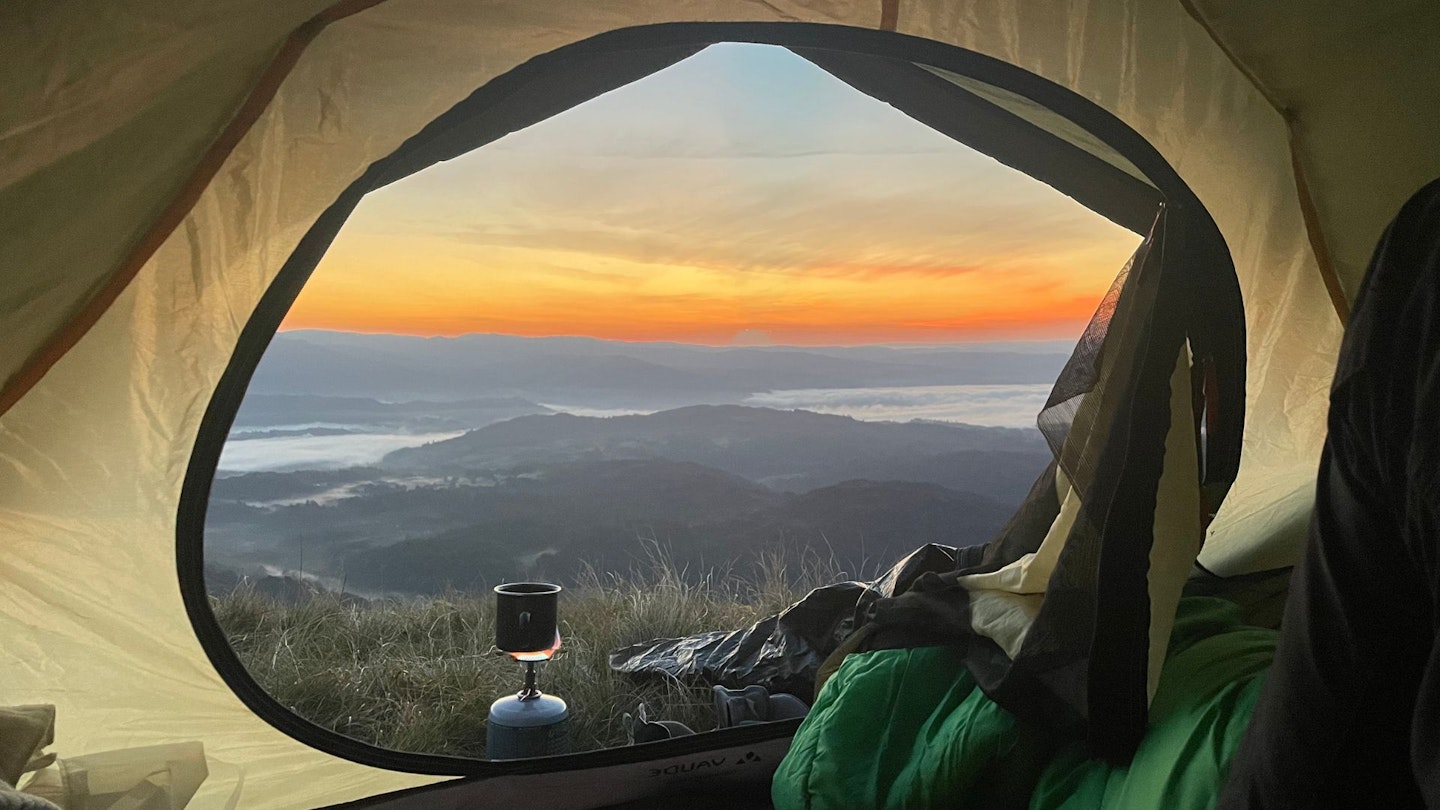
That feeling of space and relaxation you get when having reached the top. You stop, sit on a hard rock seat, and take in lungfuls of fresh air. But you can make it all last even longer by spending the night.
The best thing wild camping gives you is more precious time in the mountains. A few years ago I was lucky enough to spend 12 months wild camping on all 214 Wainwright mountains in the Lake District.
Unless there was a special reason not to, such as an enticing cave to see or gale-force winds to avoid, I aimed to camp close to the summit on every mountain.
Summit camping is the highest level of wild camping. I saw amazing sunrises with red translucent fireballs and stormy sunsets where the light reflecting on the landscape made it look like melted gold. When you’re wild camping, it takes away the need to rush back down.
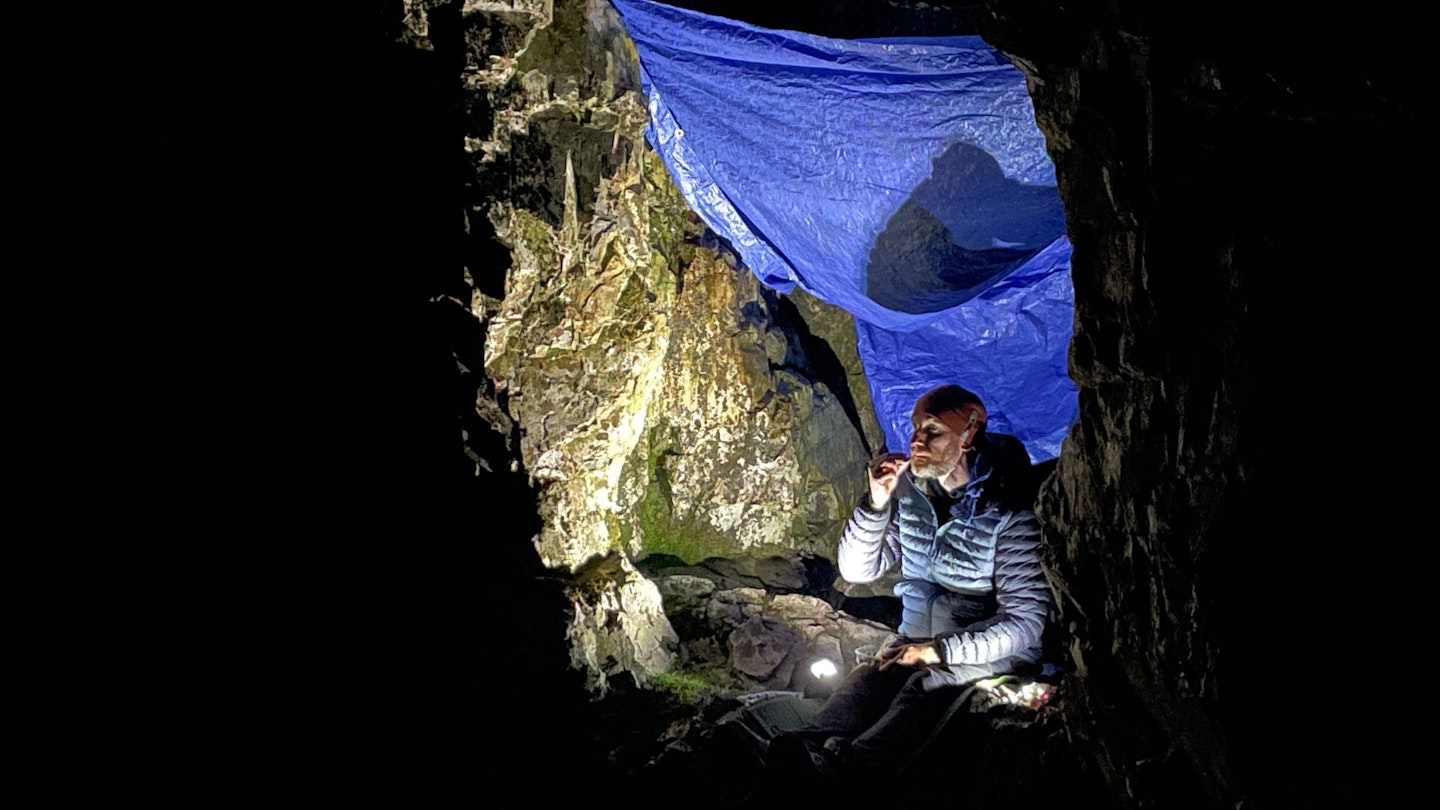
You have time to potter amongst the landscape, and on long afternoons when the sun is out the views seem to stretch forever. There were plenty of foul-weather camps as well, but life isn’t about waiting for the storm to pass, it’s about learning to camp in the rain.
If I hadn’t climbed to those summits when the heavens opened, I wouldn’t have seen a brocken spectre from the top of Red Pike, or cloud inversions filling the valley of Martindale. Only by battling through a snowstorm was I rewarded by having the Helvellyn summit plateau all to myself.
The variety of weather, camping options and views kept me enthralled for the full year, and I’ve picked 10 of the best to give you some ideas of where to head for your next or first wild camp…
1. Jack's Rake, The Adrenaline Camp
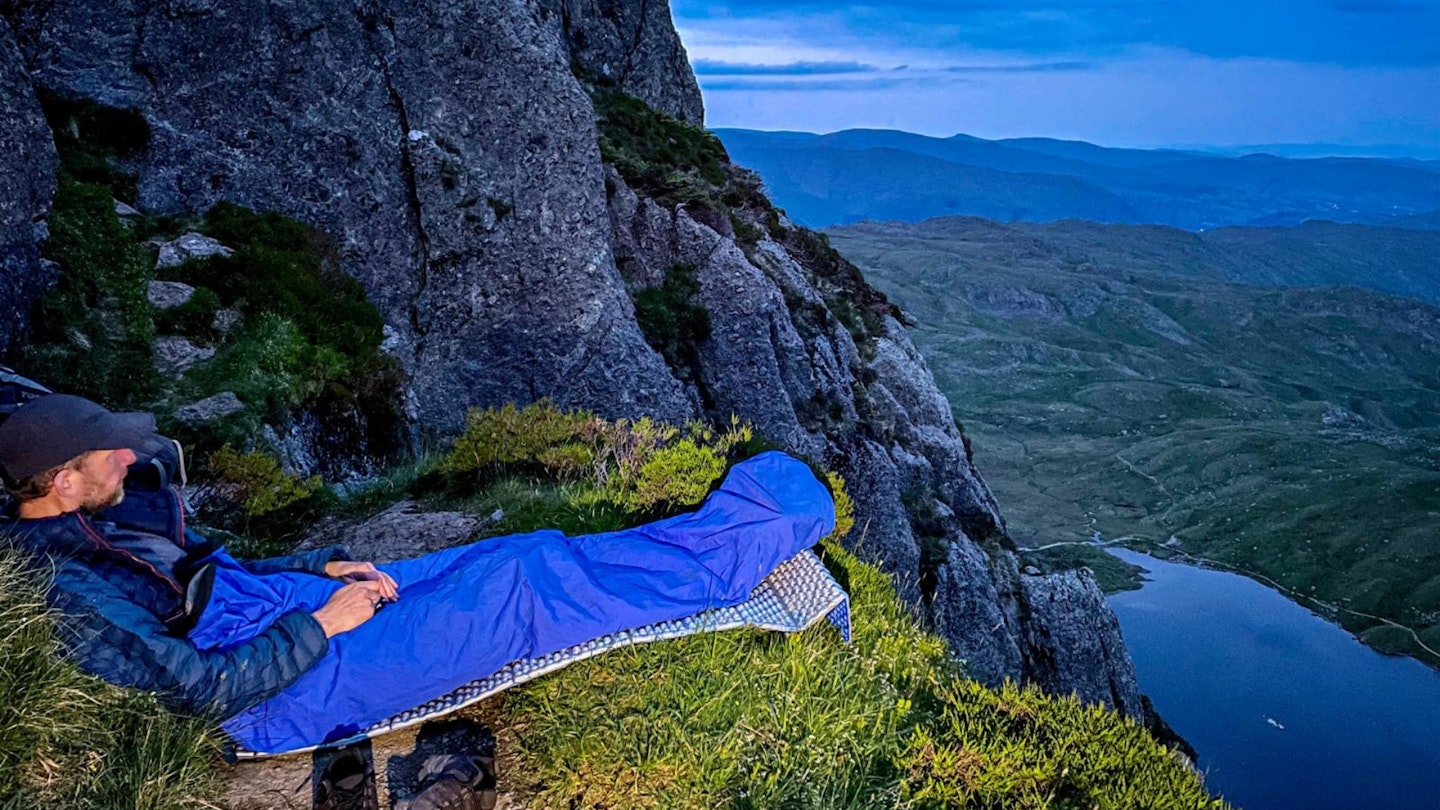
This wild camping spot is for the adventurous and needs to come with a health warning. Pavey Ark is famous for its scramble, and the huge rock face overlooking Stickle Tarn is undoubtedly the best feature of this mountain.
You may have already scrambled Jack’s Rake, a nerve-jingling route that divides the boundary between hillwalking and rock climbing. But have you ever thought of sleeping on it? Trying to find a suitable place to bivvy for the night is not easy.
I passed the famous tree growing at the end of the steep scramble and continued to reach the fallen chockstone that sticks up at an unusual angle. Behind this is a little ledge but it was uncomfortable, so I carried on upwards. The view over Stickle Tarn was magnificent and the drop perilous.
After scrambling over a rock block after the slight dip in the narrow track, the perfect ledge appeared. Just long enough for me to lie down with my feet dangling off the edge but feeling safe enough to sleep. This was an amazing place to bivvy and I reassured myself with the thought that you never slide off the end of your bed when you sleep.
2. Dodd, The Hammock Camp
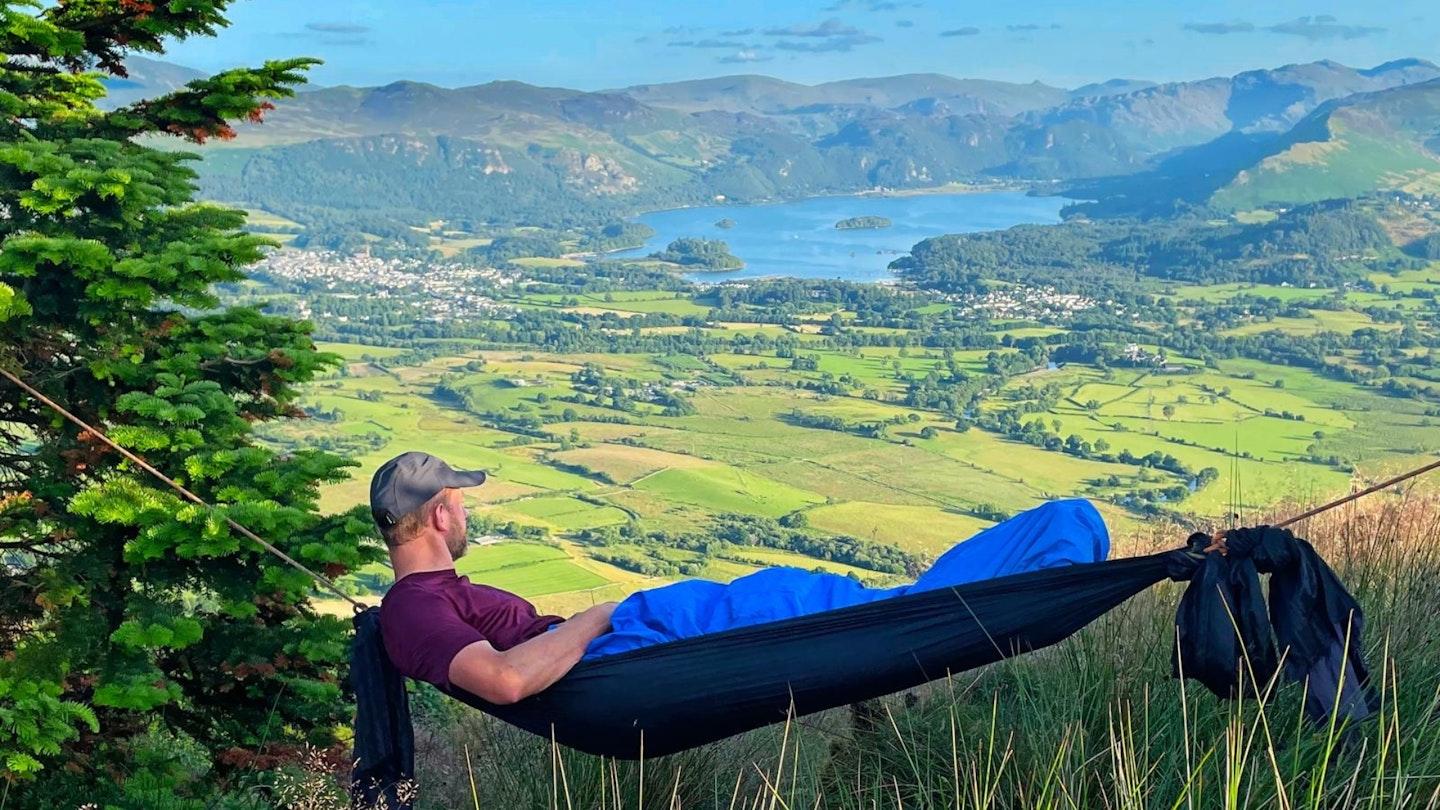
Like a famous pop star or Brazilian footballer, one name is all Dodd needs. It is located under Skiddaw above Bassenthwaite Lake. You might think hammock camping is all about being hidden in a deep, dark wood, but here is an exception. Dodd offers a supreme wild hammock camping opportunity.
This is the only Wainwright where you can hammock camp on the summit, and although hammocks aren’t my preferred way to sleep this opportunity was one I could not miss. Dodd’s summit has a stone pillar but not the right trees for a hammock camp.
It took a bit of time but eventually I found the ideal spot, following the south path from the summit to the subsidiary peak. A pair of perfect conifers were standing resplendent, four metres apart from each other.
The angle meant I could string my hammock up with the sun setting behind me and enjoy a fabulous view over Keswick and Derwent Water.
3. Pillar, The Mountain View Camp
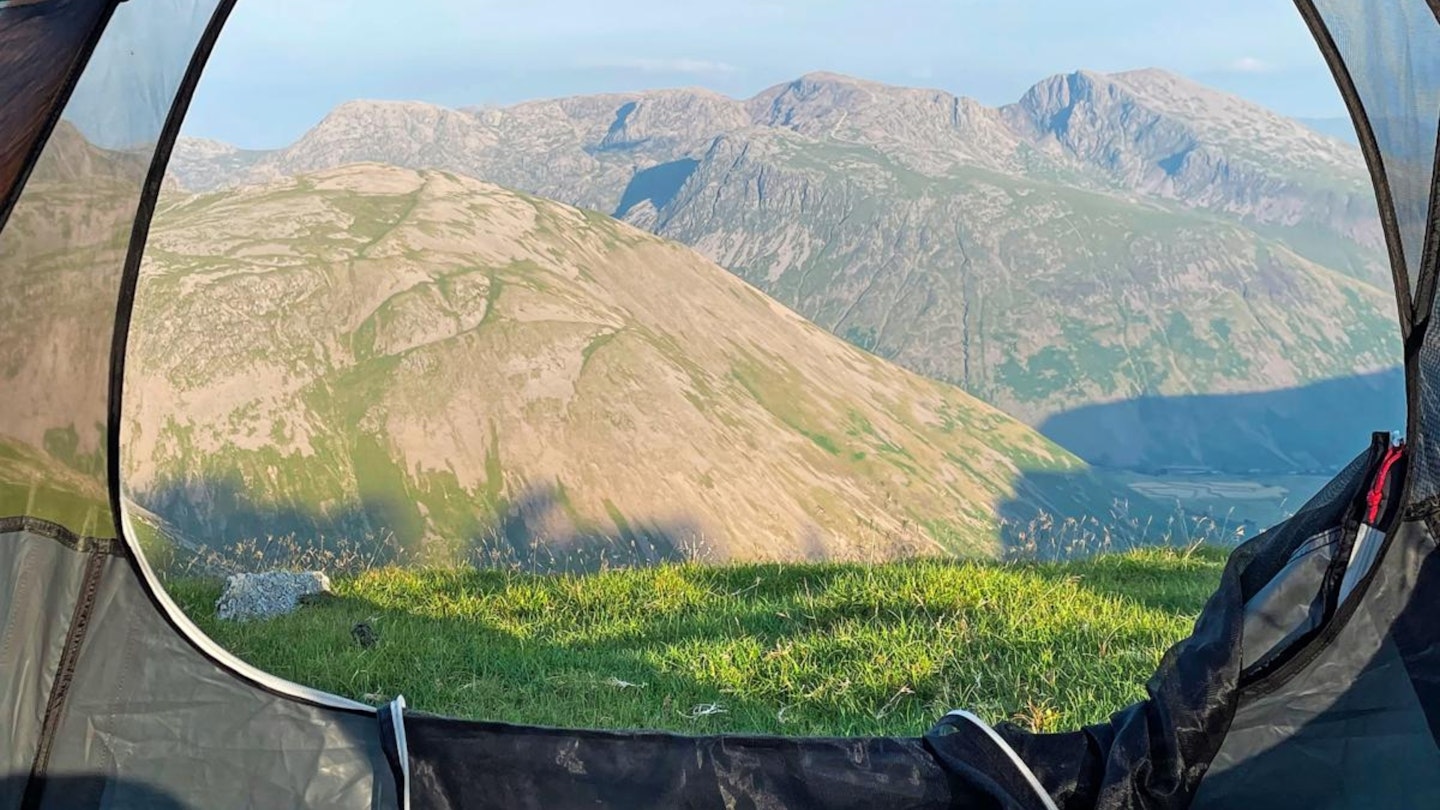
A huge lump of rock, gargantuan. Not pointy or domed, but massive. There are two tarns on the way up from Black Sail. The top one is better and would make a lovely wild camping spot if you weren’t a summit camper. But why wouldn’t you be?
Carry some water with you, and at the top the craggy view from the champagne cork of Gable stretching to Scafell is something worth celebrating. This is the view that I chose for the night, albeit a better one for the sunset colours is to camp above Pillar Rock looking out over Ennerdale Water.
That said, looking to Scafell Pike you don’t get the colours of the sky, but you do get to watch the colour of the rocks change as the sun sets. Light-grey rock, changing to red-gold in the final hour of sunlight and then cooling into a dark and heavy grey. It makes a beautiful change, like watching the hardening of stone.
4. Angletarn Pikes, The Wild Camp for Newbies
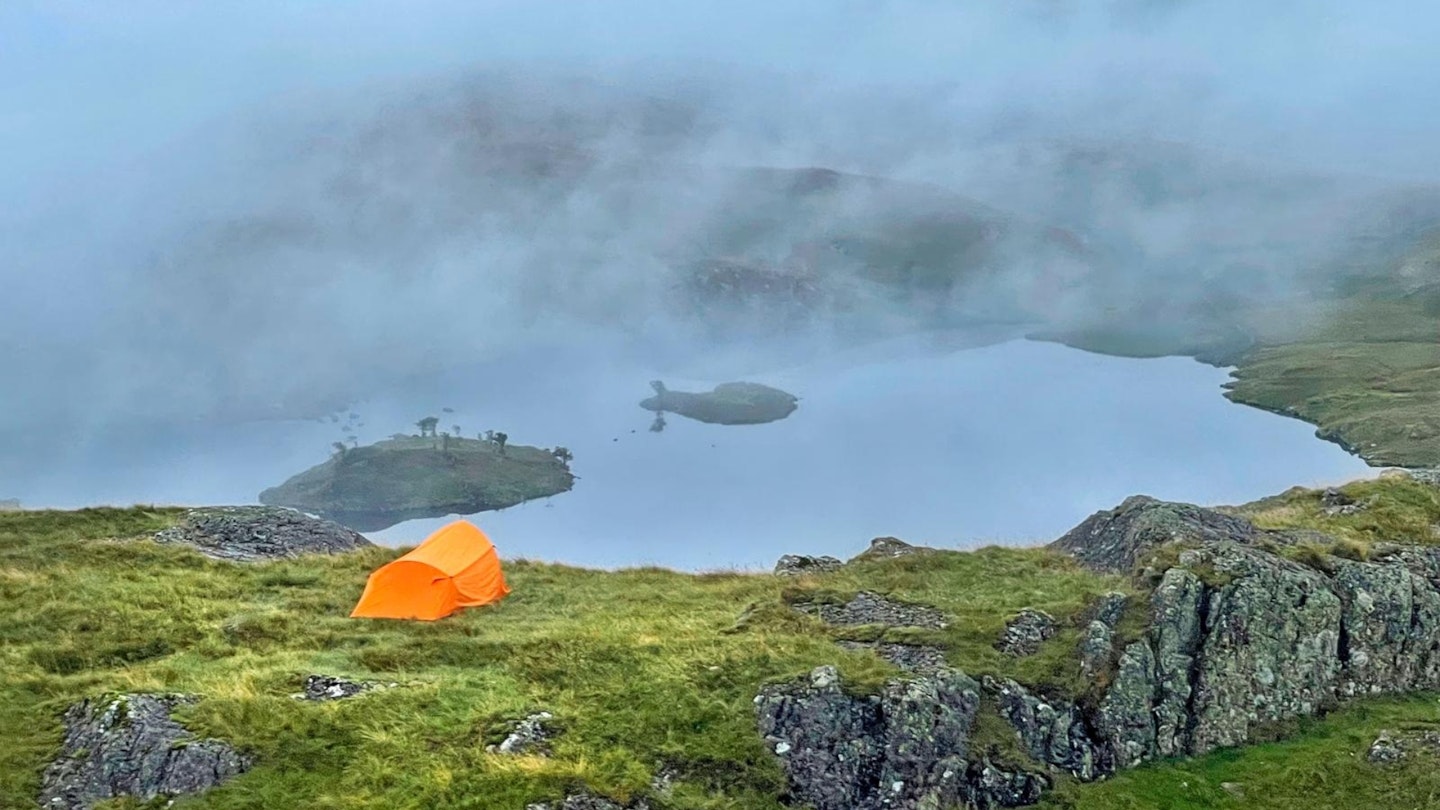
Angle Tarn is the number one destination for all new wild campers, and why wouldn’t it be? For less than 90 minutes walk, even with a heavy pack you can be in the mountains, sitting next to glistening water with enticing islands and looking at views of Striding Edge in the distance.
It will take several visits before you’ve tried all the pitches around the tarn and can decide which is your favourite. Angletarn Pikes, the mountain, sits north of the tarn, and has two summits. The best camping is south of the summit with a view of the tarn, the other side is a bog.
Just below the summit, there are a series of grassy ledges which give an airy feeling, like the most expensive seats in the stadium, and you have the full panorama as your view. I have camped at Angle Tarn many times, and this is probably the best spot of all.
The day’s rain stopped in the evening and was replaced by a drifting mist. Brock Crags came in and out of view on the other side of the water and it was a dreamy sight.
5. Scar Crags, The Himalayan View Camp
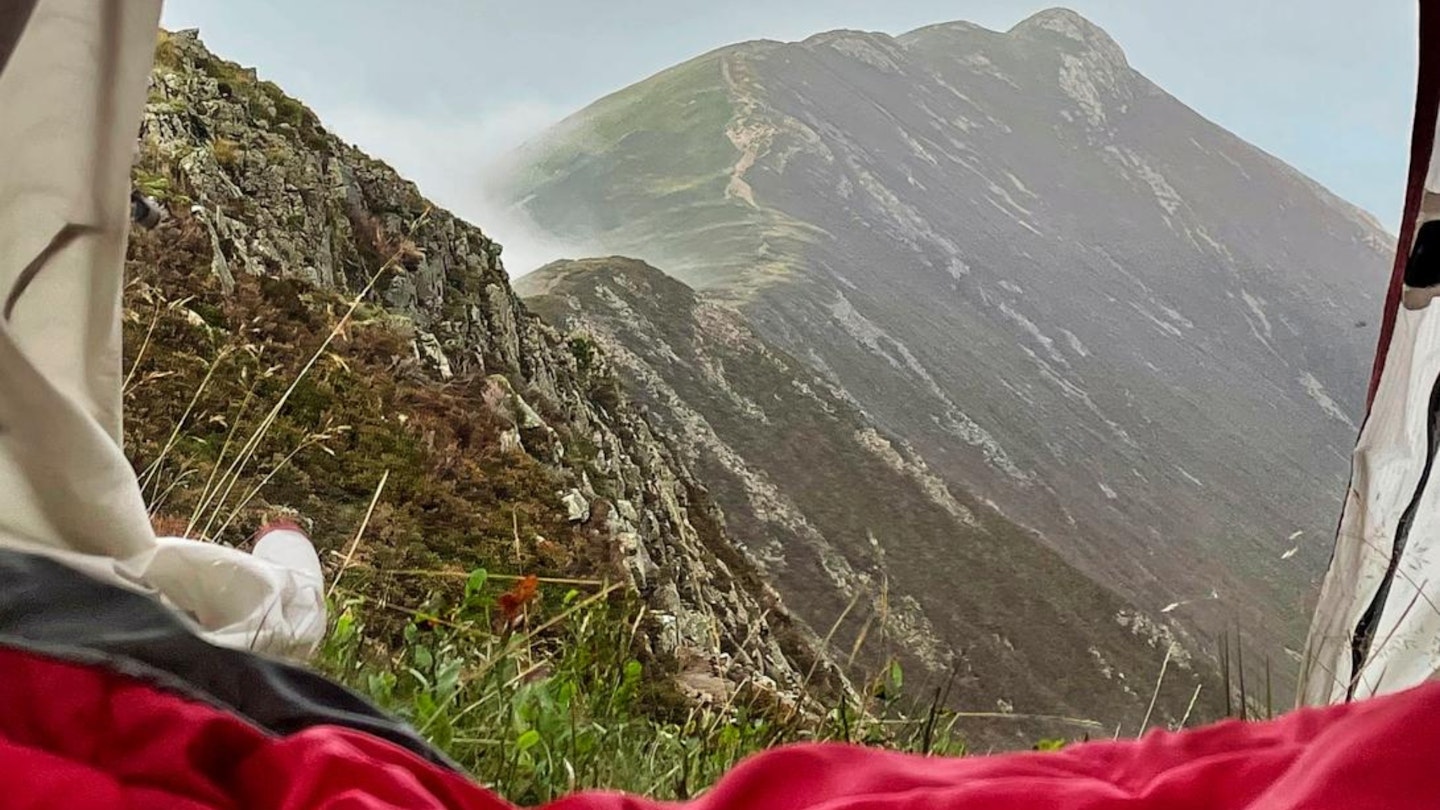
The impassable ridges running south from the summit make this a beautiful mountain, but the top of Scar Crags isn’t an easy place to find a good camping spot. Ideally you want views, flat ground, and grass for comfort with a sense of safety.
The top is a long ridge with a stone path taking up most of the space. Near-vertical rock ridges run off to the south side and the north side is steep sloping grass. The western side has the flattest grass, but your view is then the eyesore of the yellow brick road climbing up to Sail. I chose a spot east of the summit with a great view of Causey Pike.
It wasn’t flat, safe or grassy, but you can’t have everything you want. Sitting inside my tent, looking out over the crinkles as cloud drifts across it doesn’t feel like I am camping in the Lake District. More like a Himalayan wilderness.
6. Wetherlam, The Snow Camp
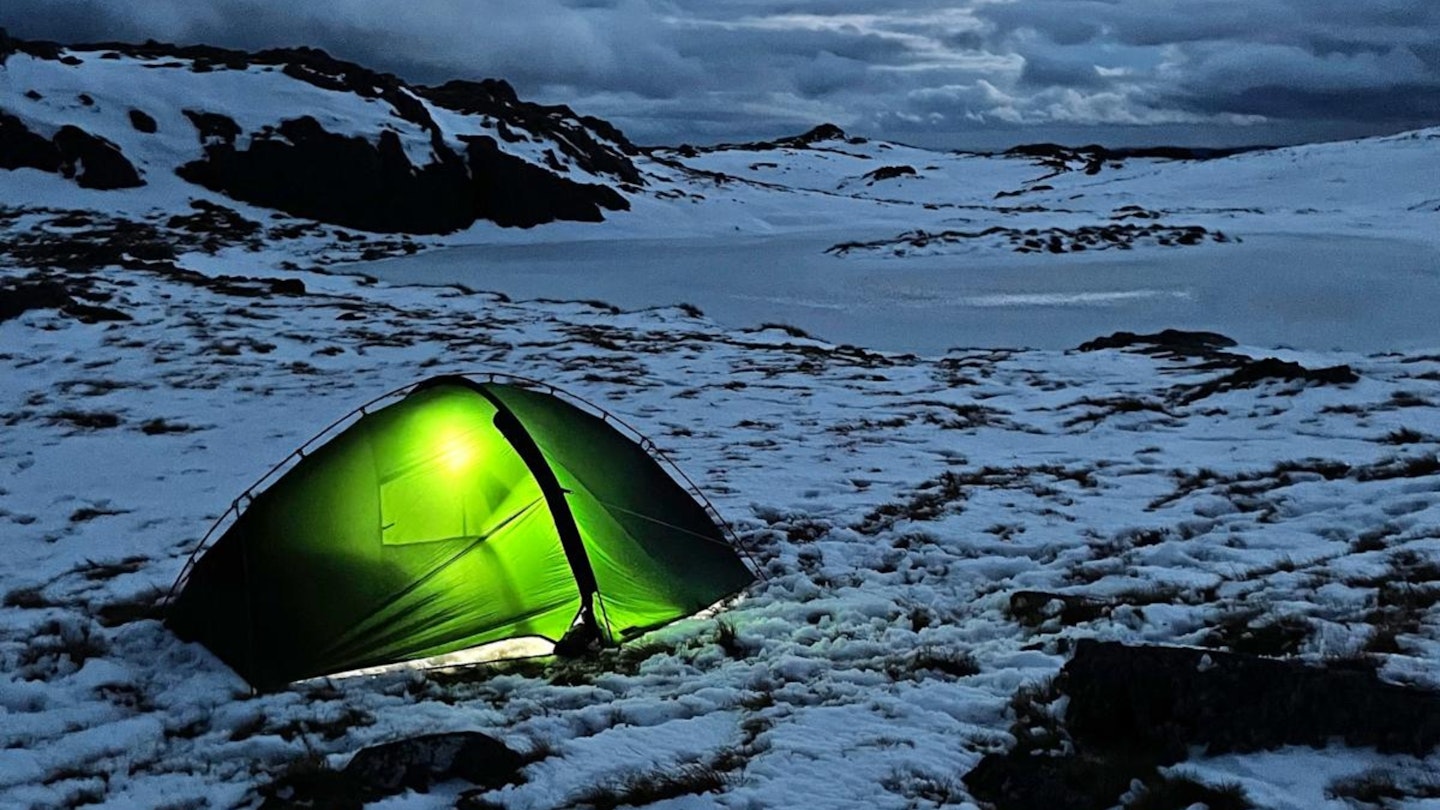
Wetherlam provides one of the best snow camp adventures you can have in the Lake District. When I left Tilberthwaite the vegetation was in full winter mode, dead greenery from the summer left on the surface as the life force went underground for winter.
Looking up, the snow line was visible on the mountaintop, the way a child draws a mountain with a zigzag line marking the boundary. Steel Edge Ridge led me into the snow and required crampons, as hard ice covered the steep rocks. This was not a place I would want to slip. Reaching the unnamed tarn south of the summit I pitched my tent as fresh snow started to fall.
The final walk to the summit was glorious, a whiteout, freezing conditions, snowdrifts up to my knees in places. Occasionally there was a break in the cloud, revealing the view across the brown valley to the white-topped mountains of the eastern fells.
I’d left the light on in my tent to help me find my way back. A glowing green button the only colour in a black and white world.
7. Pike of Stickle, The Cable Camp
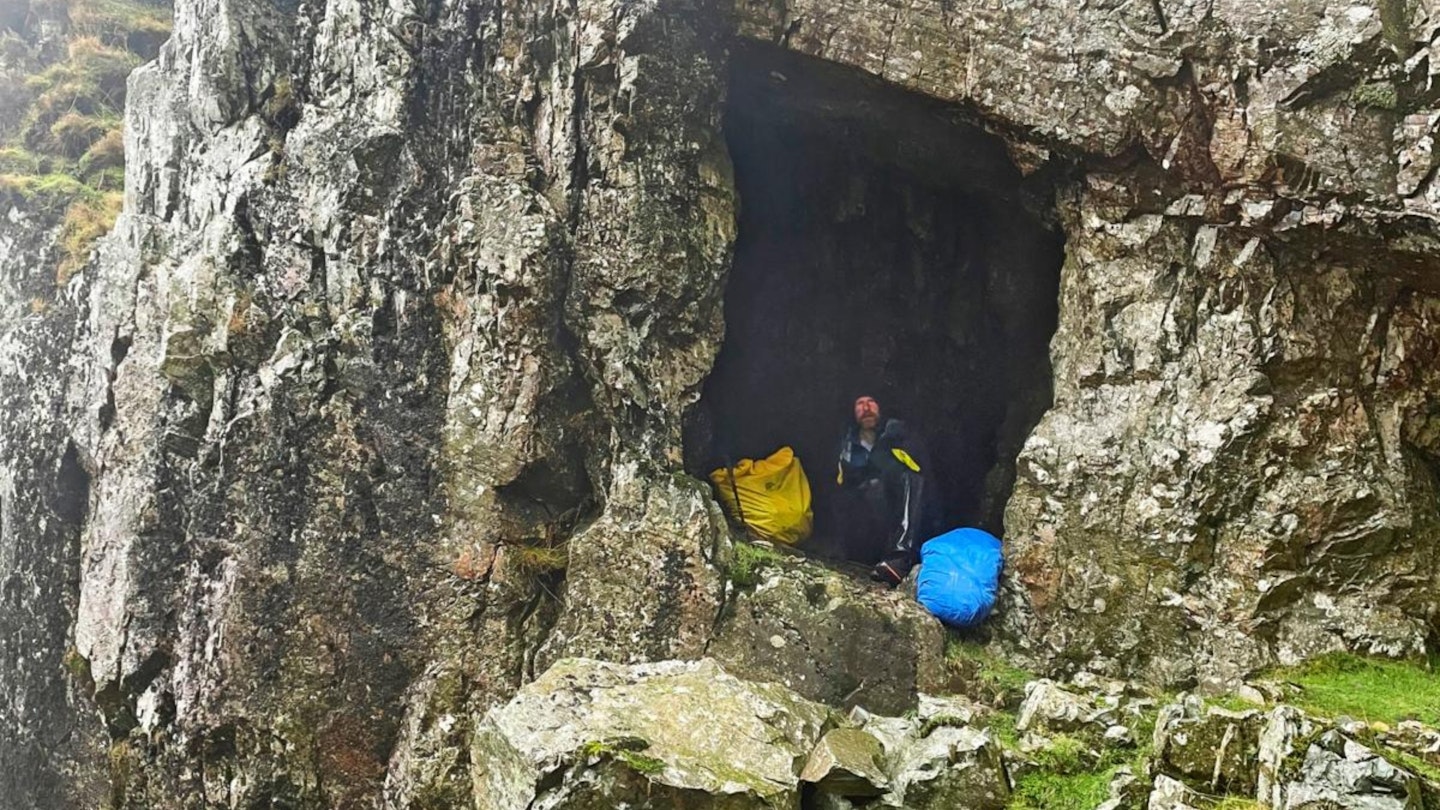
How often do you get a chance to spend the night in a cave? And this is not just any cave – this cave is a Stone Age Cave. More than 4000 years ago, before metal was discovered, stone axes were the deadliest weapon. And there was no place more deadly than the Pike of Stickle.
This mountain was home to a stone axe factory and discarded rejects are still found in the scree today. There is no view from the cave. Views are for tourists and if you are a Stone Age axeman surviving winter in Langdale, it’s much more important to avoid the wind hurtling up the scree run than look across the valley opposite.
This is not a mountain for a tent – the rocky pike requires a small scramble to reach the top and there are plenty of crags to squeeze between in your bivvy, but the experience is well worth the effort. It’s not an opportunity to pass up. Located down the scree, it is hidden in the west wall and needs a leap of faith to head down the run which from the top looks nothing like a path and more like a cliff edge.
8. Nab Scar, The Late-Night Camp
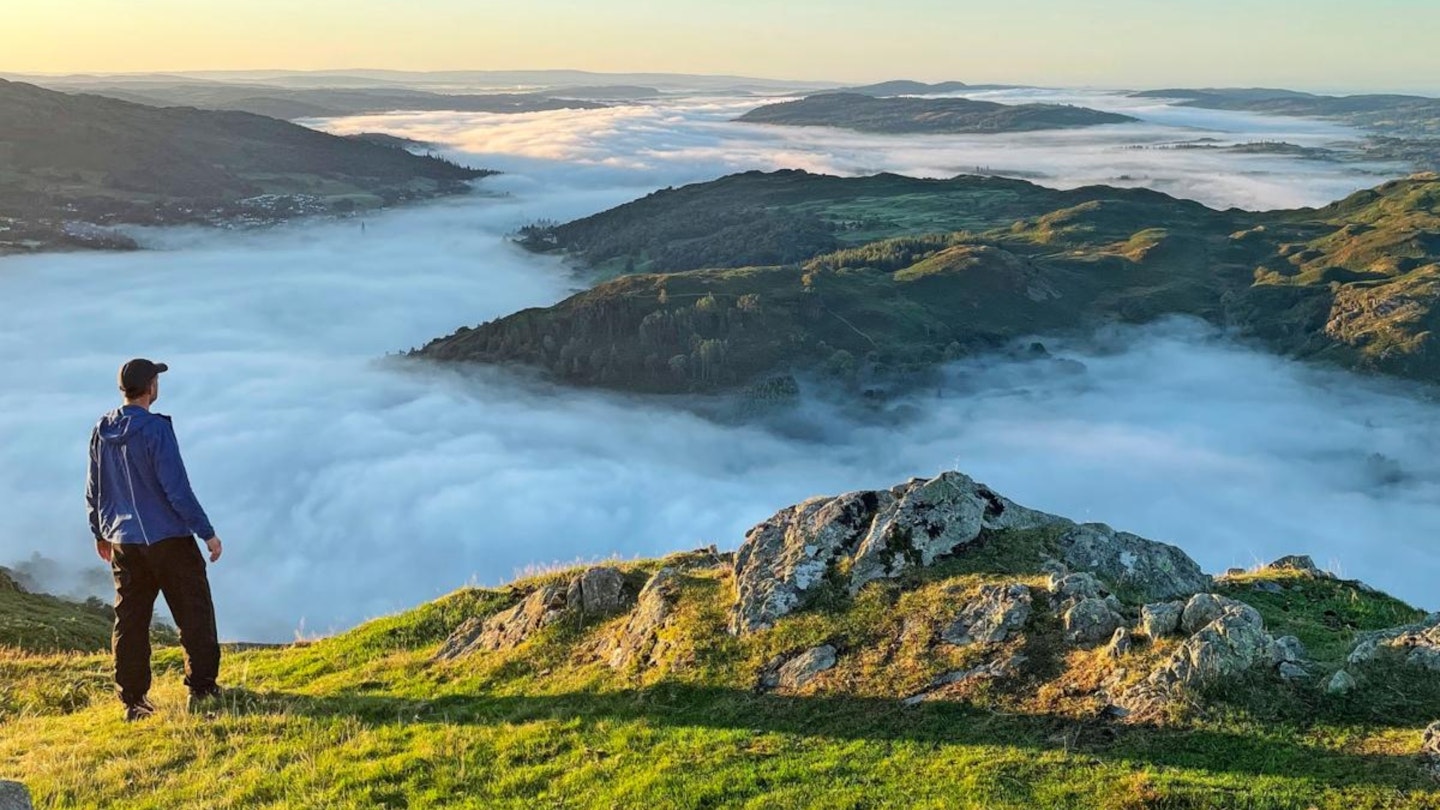
Nab Scar is little more than a bump on the ridge to Fairfield. But what a view this bump has, with Ambleside and Lake Windermere down below as if you were camping in a drone taking a photograph. There are plenty of grassy flat spots to pitch your tent.
It’s only low down and a short walk, so a ‘get there late and leave early’ attitude is needed unless you want to be on show as thousands of hikers on the Fairfield Horseshoe walk past. It’s the ideal camping spot to start your weekend if you’re arriving in the mountains late on a Friday.
To witness a cloud inversion, you need a bit of luck. But, as the saying goes, you make your own luck. One thing’s for sure, you won’t see a cloud inversion when camping in the valley.
Early morning is often the best time, and if you’re already camping on the summit you’ll have a better chance than most.
9. Scoat Fell, The Sunset Camp
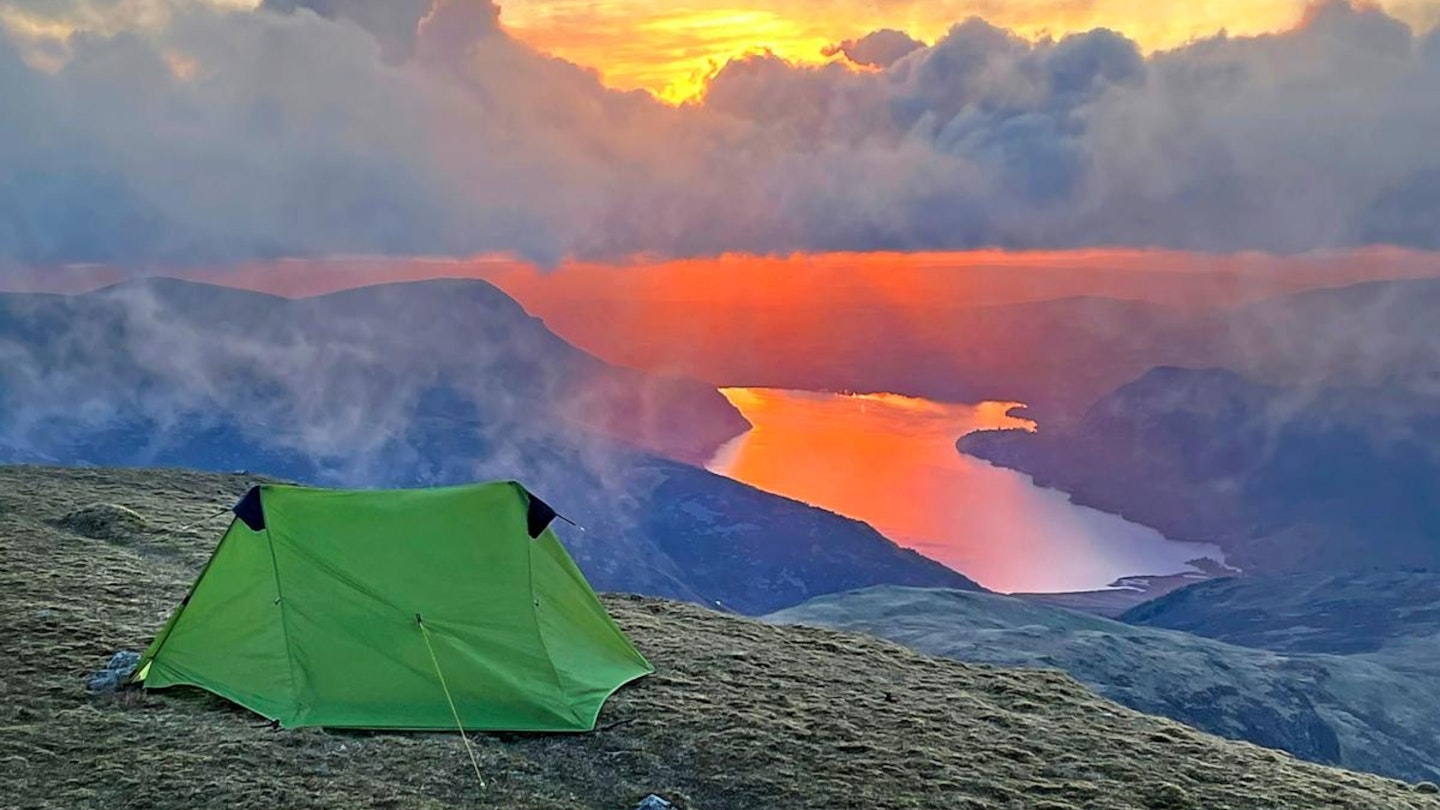
Looking out at the iridescent colours of the sky reflecting in the lake, my eyes couldn’t quite believe the sight. Wispy clouds were blowing over while a bigger cloud blocked the direct line of the sun. Moody purple light mixed with bright white-yellow and golden orange. It gave me goosebumps.
I sensed a metallic taste in my mouth that matched the colours as the light travelled above and below the solid cloud creating a different perspective from the normal. Scoat Fell is an uncelebrated mountain surrounded by other big names – Bob Graham ran over the top and didn’t even count it as one.
To me, it is very impressive and a great place to pitch up. A large flat summit plateau with great views in all directions, this is one of my favourite spots. It’s above Wasdale and close to the Scafells, but far enough away not to be crowded.
My walk took me from the other side over Steeple to reach the summit after climbing the unnamed ridge from Ennerdale. As the sun set, the air was electric, clouds came and went. Behind Ennerdale, the sky turned metallic purple and orange and the light reflecting on the lake made it look like melted gold.
10. Scafell Pike, The Relaxing Morning Camp
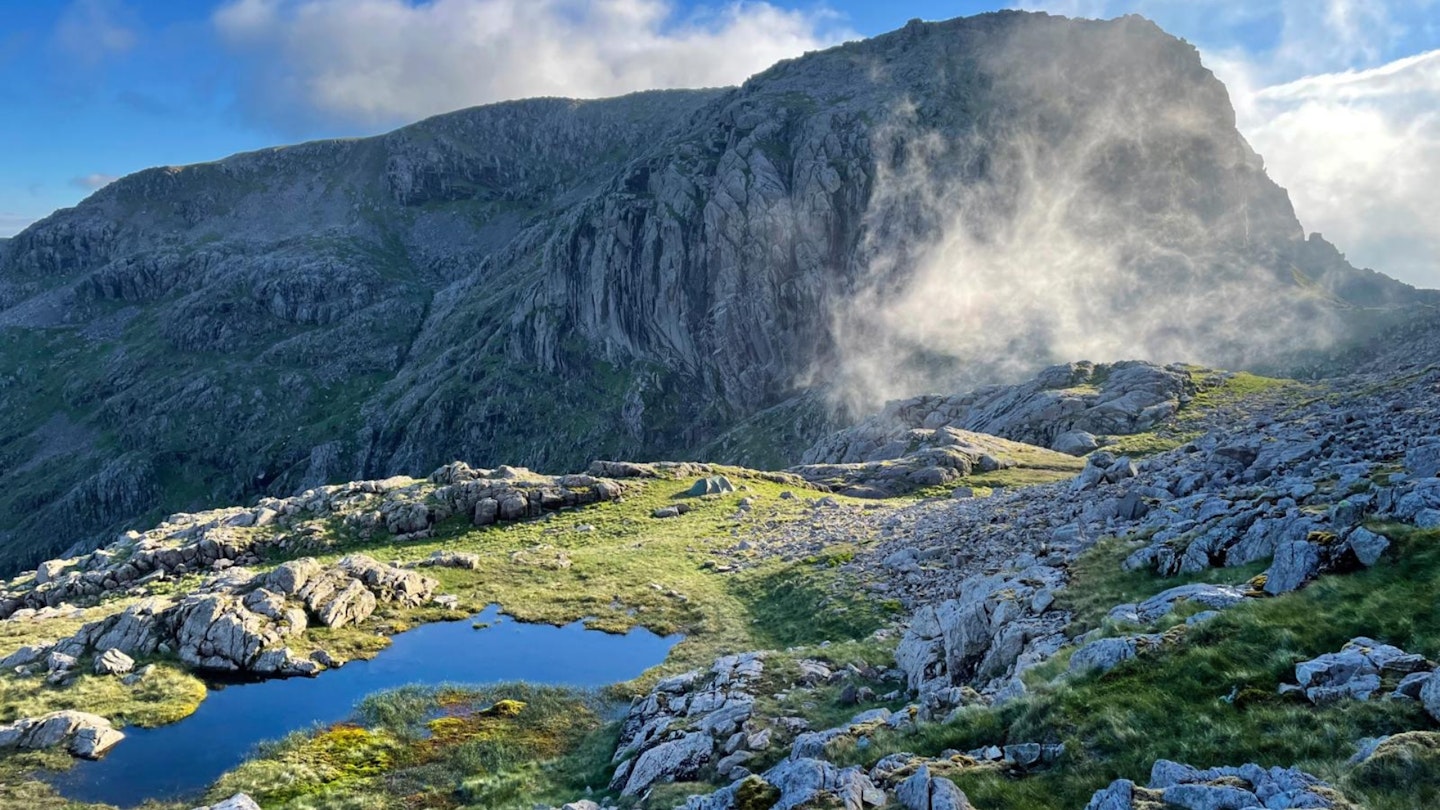
The top of Scafell Pike is a rocky affair and there are plenty of options for a bivvy amongst the banana skins. The Nuttalls tell me they found a grassy spot on the summit to camp and eat their rehydrated custard powder from, and although I couldn’t see it, they are the guidebook writing experts.
Wainwright recommends camping in Hollow Stones, but I took the advice of Trail columnist Ronald Turnbull and camped at Broadcrag Tarn. It has views of the gap at Mickledore and Broad Stand behind. A truly amazing wild camping spot, one of the best and deserted even on a Saturday night.
In the morning it’s a very relaxing place to be. The huge size of the mountains puts everything in perspective. It can feel like you are in a fairy tale on another world. It’s a long walk to get there past Great Moss and up Cam Spout Waterfall, so you can relax knowing it will be a while before any morning hikers disturb you.
About the author
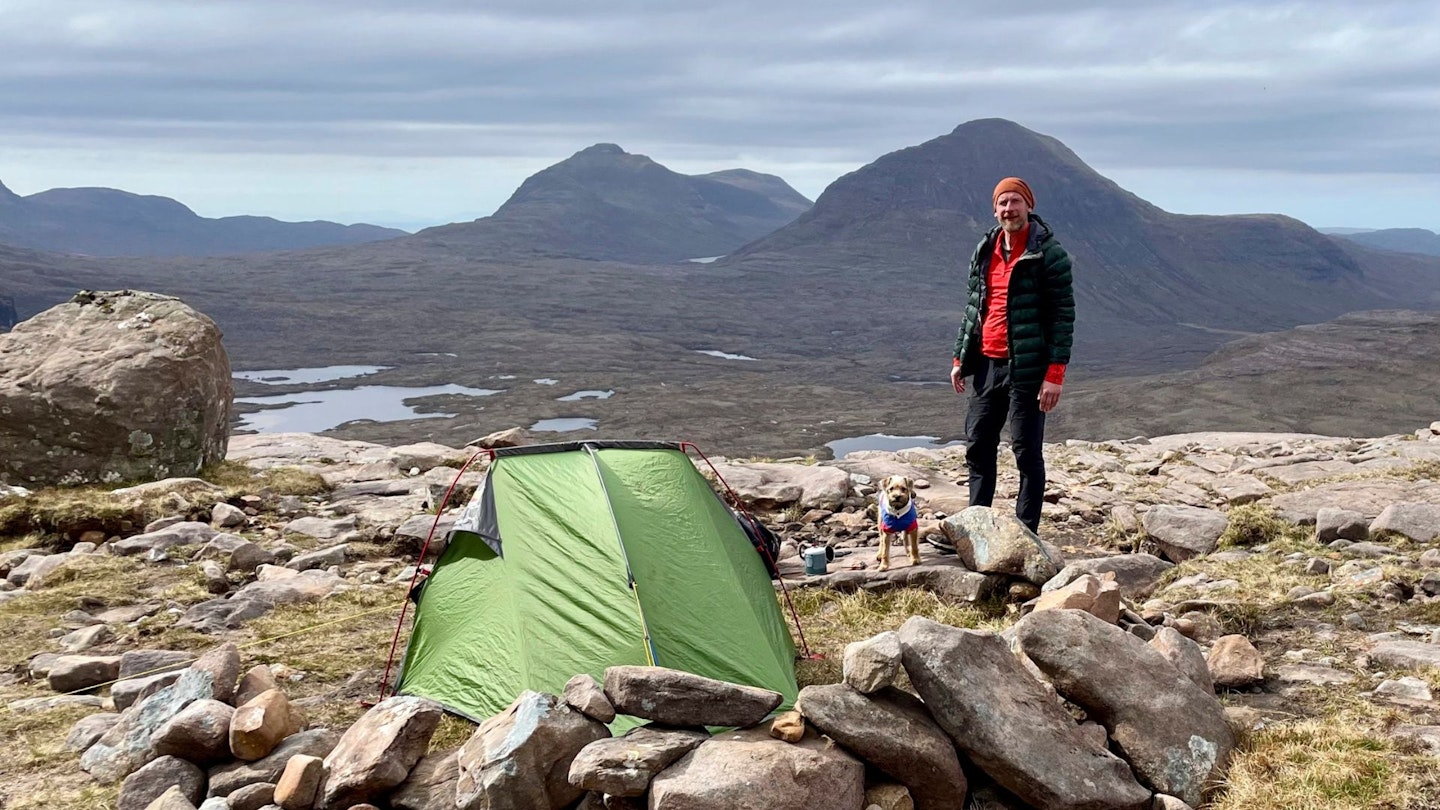
Russ Moorhouse is one of the UK's most prolific wild campers. As well as his well-documented challenge to sleep on all 214 of the Lake District's Wainwright fells, Russ is also the only person to have slept on every peak on the Trail 100 bucket list of 100 peaks every hiker should climb in their lifetime. Russ has written five books about his wild camping adventures, including the excellent Wild Camping the Trail 100.
